Key takeaways
- GitHub is a powerful version control tool that enhances collaboration and simplifies error recovery.
- Key features like repositories, branching, and pull requests facilitate organization, experimentation, and smooth teamwork.
- Committing changes regularly with clear messages is vital for project transparency and documenting evolution.
- Resolving merge conflicts teaches important communication skills and emphasizes the collaborative nature of coding.
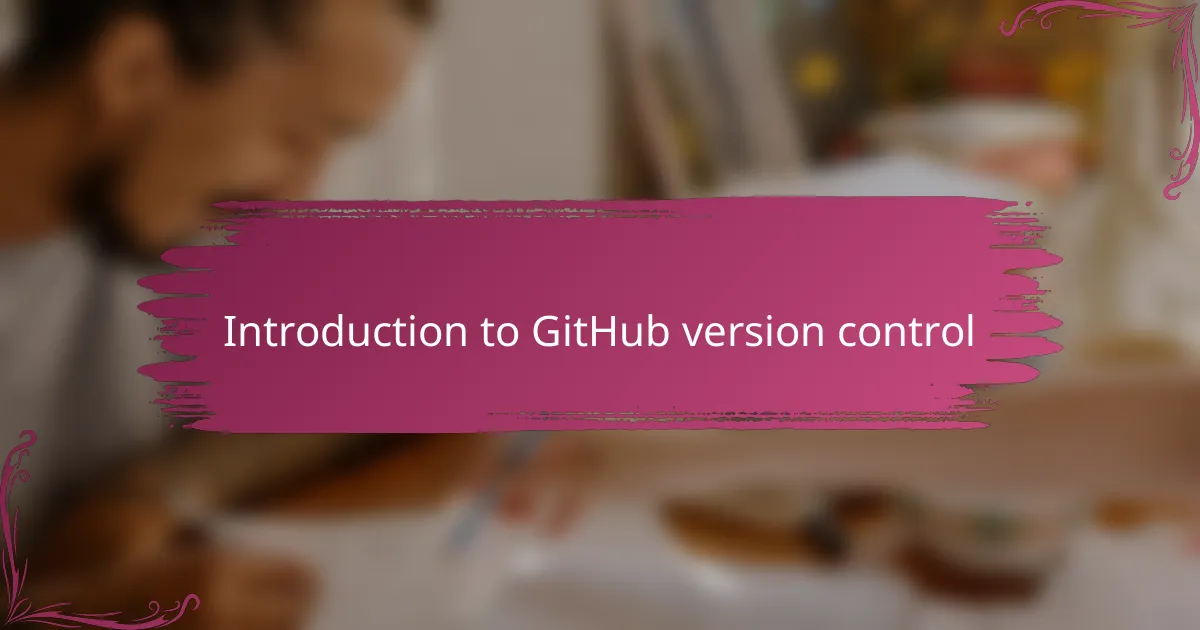
Introduction to GitHub version control
When I first started using GitHub for version control, I was amazed at how it transformed the way I manage my code. GitHub isn’t just a place to store files—it’s a powerful tool that tracks every change, making collaboration and error recovery seamless. Have you ever wished you could rewind your project to a previous state without losing hours of work? That’s exactly what version control offers.
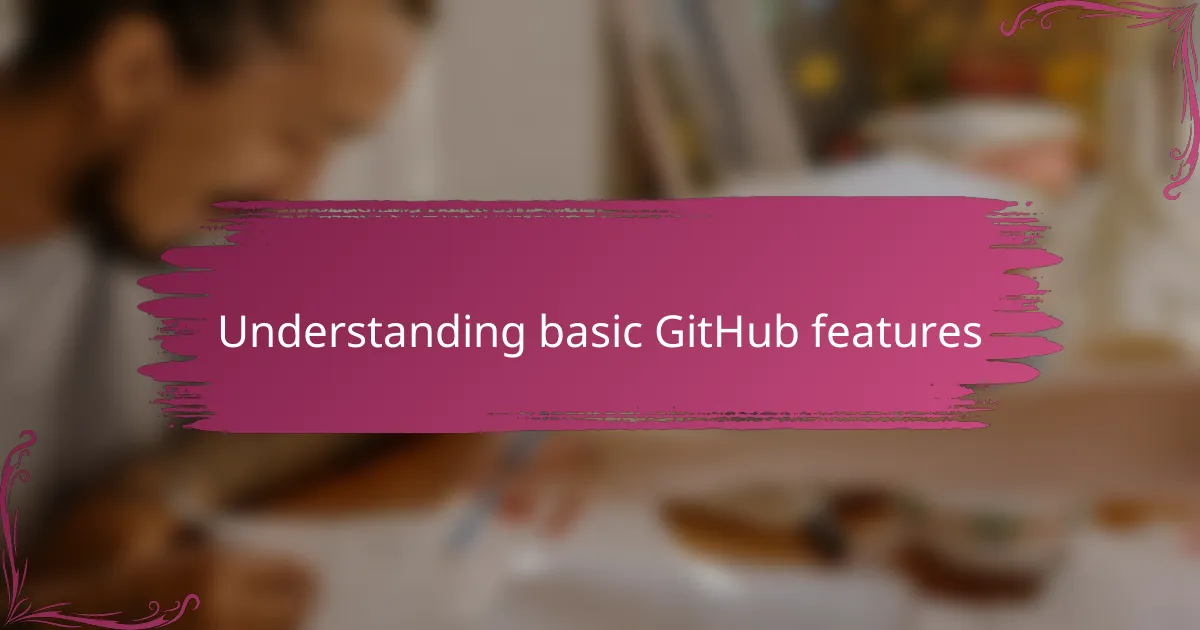
Understanding basic GitHub features
One of the first GitHub features I got to grips with was repositories—think of them as project folders but with superpowers. At first, I found the idea of creating and managing repositories a bit intimidating, but soon I realized it’s the heart of organizing your work. Have you ever struggled to keep your projects neat and accessible? Repositories solve that problem beautifully.
Branching was another game-changer for me. I remember feeling hesitant to experiment because I feared breaking my code. But with branches, I could try out new ideas safely, knowing my main work was untouched until I was ready. This feature gave me the confidence to be more creative and take risks in my coding.
Then there’s the pull request feature, which felt like magic once I understood it. Collaborating with others suddenly became less about endless emails and more about clear, trackable discussions right alongside the code. Have you ever found teamwork on code frustrating? Pull requests made it so much smoother and even enjoyable.
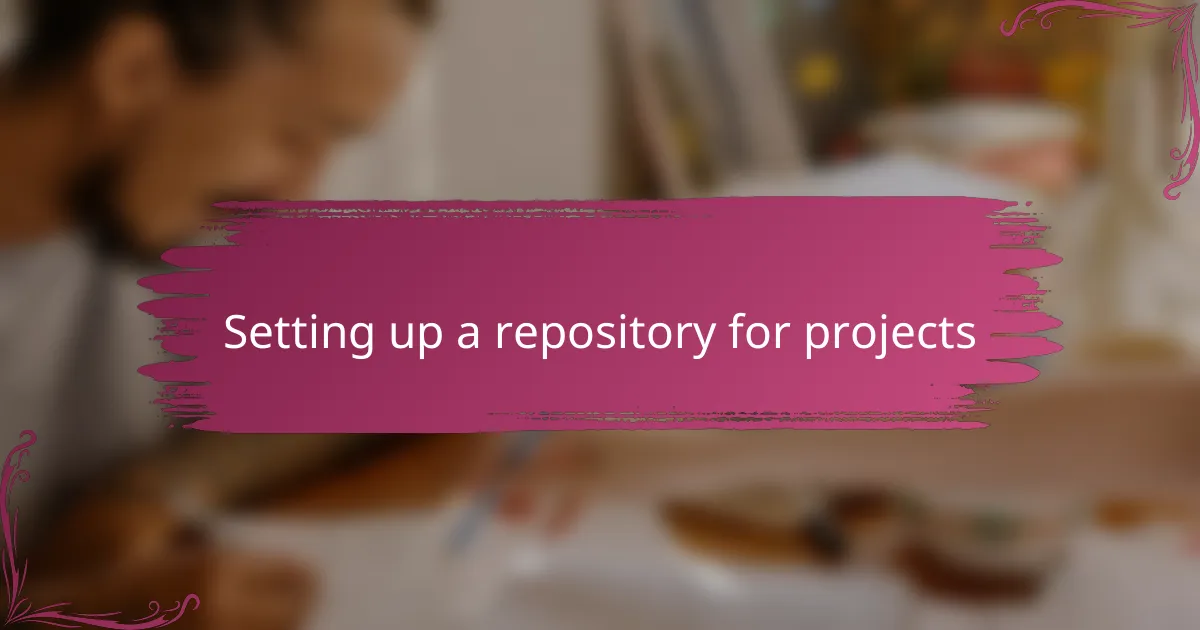
Setting up a repository for projects
Setting up a repository for my projects felt like opening a new chapter in how I approach coding. At first, I simply clicked “New repository” on GitHub’s website and named it, but soon I realized each choice mattered—like whether to make it public or private. Have you ever wondered if your code should be accessible to the world or kept just for yourself? Deciding this made me think more carefully about who I trusted with my work.
Initializing the repository with a README file was surprisingly satisfying—it’s like adding a quick intro to my project, explaining its purpose right from the start. I remember feeling a bit proud seeing that file appear alongside my code. Plus, adding a .gitignore early on saved me the headache of accidentally committing unnecessary files, which I learned the hard way sometimes.
Connecting my local project to the GitHub repository was another milestone. Using Git commands to push my code felt a bit like sending a message to a distant friend, knowing they’d always keep a copy safe. Have you ever hesitated before hitting ‘commit’ or ‘push’? That moment made me realize version control is not just technical—it’s about building trust in your own process.
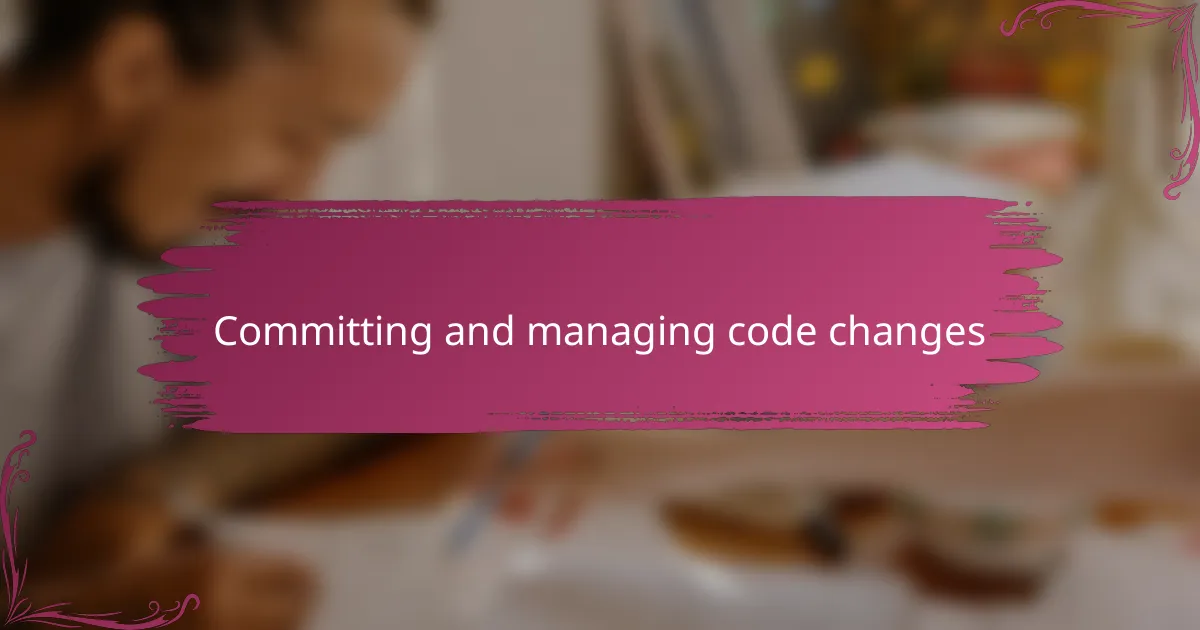
Committing and managing code changes
Committing code changes quickly became a ritual for me—each commit felt like a small checkpoint in my coding journey. At times, I hesitated, wondering if my changes were meaningful enough to record, but I learned that even tiny updates matter. Have you ever stopped to think how your past changes tell the story of your project’s evolution?
Managing those commits through clear, descriptive messages was something I took seriously. Saying exactly what I changed or fixed made revisiting the project later so much easier, especially when I got lost in weeks of work. I remember one time when a vague commit message led me down a frustrating rabbit hole—since then, I make sure my commit notes are precise and helpful.
Merging branches and resolving conflicts felt like solving a puzzle, sometimes straightforward and sometimes frustrating. At first, I found conflicts intimidating, but over time I understood they’re just a natural part of collaboration and growth. Do you feel nervous when faced with merge conflicts? I’ve been there, but each resolution boosted my confidence and deepened my grasp of the code.
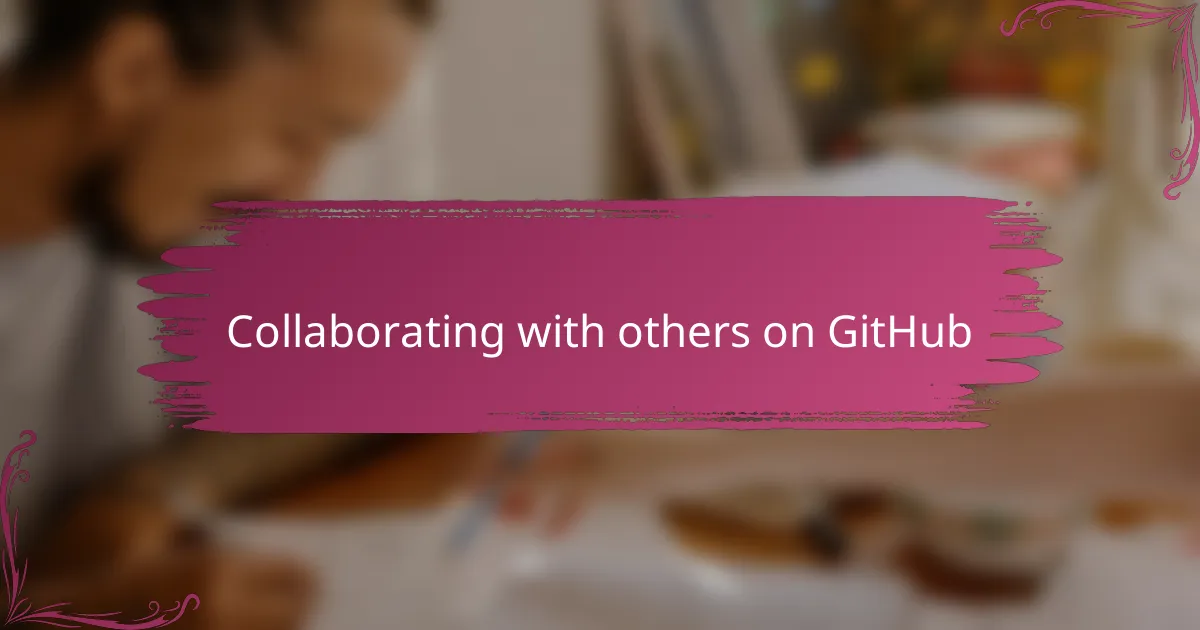
Collaborating with others on GitHub
Collaborating with others on GitHub really changed how I experience teamwork. I recall the first time I opened a pull request—it was like inviting someone to review and improve my work without endless back-and-forth emails. Have you ever felt stuck trying to coordinate changes with others? Pull requests made that process clear and manageable for me.
One thing I genuinely appreciate about GitHub collaboration is the transparency. Being able to see who made which change and when helped build trust within the team. I remember feeling more confident sharing my code because I knew everything was tracked, and feedback was right there in context.
Of course, working with others isn’t always smooth sailing. Merge conflicts can be tricky, and early on, I found myself overwhelmed when two people edited the same lines. But resolving those conflicts taught me patience and communication—skills that go beyond just coding. Have you experienced a tough merge? Those moments, though frustrating, ended up strengthening our collaboration in the long run.
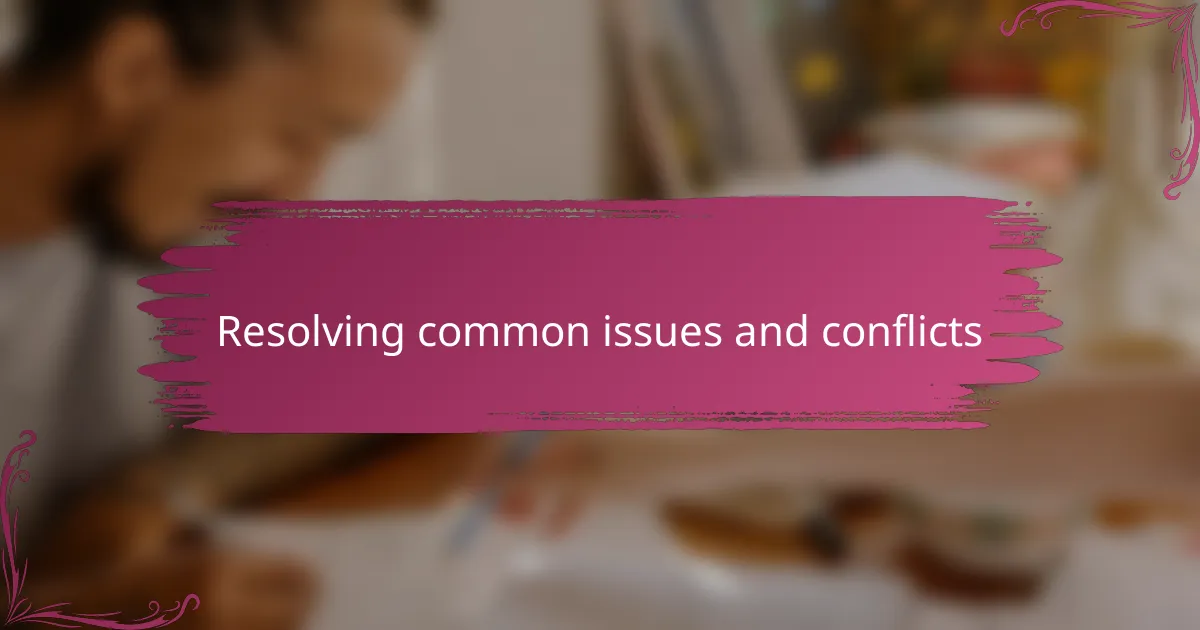
Resolving common issues and conflicts
Conflicts caught me off guard more than once, especially when I was rushing to merge changes late at night. I quickly realized that pausing to carefully read the conflict markers in the code was key—I learned to see them not as obstacles but as guideposts pointing to exactly what needed attention. Have you ever felt your heart race encountering a merge conflict? Taking a deep breath and breaking down the differences made those moments manageable.
One trick that helped me a lot was frequent pulling from the main branch before starting work. It sounds simple, but staying up to date meant fewer surprises and smoother merges later on. I used to underestimate this step, thinking I could just deal with conflicts when they came—but in reality, a little prevention saved me a lot of headaches.
Sometimes, even with careful steps, conflicts required team input. Opening a clear discussion in the pull request comments became my go-to strategy. It felt less like a battle and more like collaboration when everyone could voice their perspective. Have you found that talking through tricky merges helps unlock better solutions? I certainly have, and it made me appreciate GitHub’s social side beyond just code.